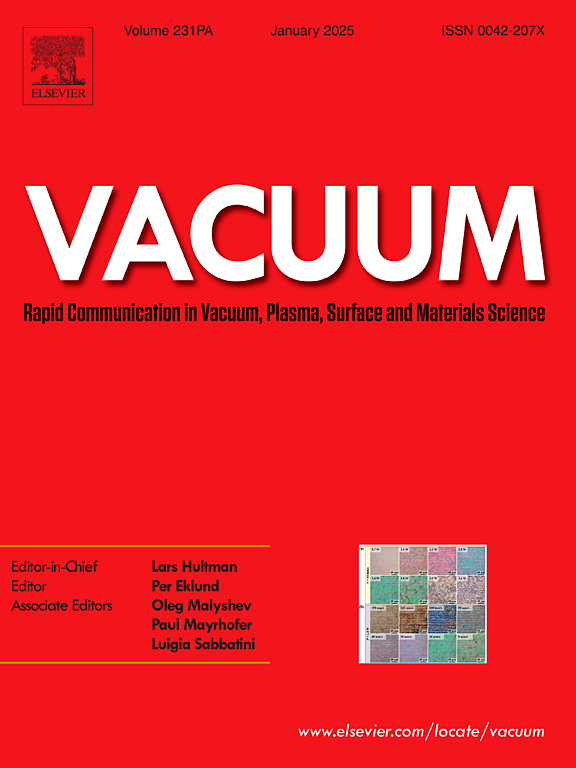Effect of preheating treatment on FGH4108 superalloy powder
IF 3.8
2区 材料科学
Q2 MATERIALS SCIENCE, MULTIDISCIPLINARY
引用次数: 0
Abstract
FGH4108 is a newly designed fourth generation powder metallurgy superalloy. In this paper, the microstructure, precipitate and element distribution of FGH4108 powder prepared by argon atomization after preheating treatment at different temperatures were characterized and analyzed. The effect of preheating temperature on the carbide evolution and surface state of FGH4108 powder was systematically studied. The results show that the carbide forming elements (Ta, Nb, Ti, Hf, Cr, W, Mo) and C of the powder are enriched towards the interior during preheating treatment. As preheating temperature increases, the degree of elemental enrichment increases, the oxidation degree of the powder surface and the oxygen content in the precipitated phase increase. The metastable MC' carbides in the powder transform into stable MC carbides, and the contents of Ta, Nb, Ti and Hf in the carbides increase with the increase of preheating temperature. At the same time, M23C6 and M6C carbides are formed. When preheating temperature is less than 1050 °C, the two coexist, and M23C6 carbides are not observed after 1100 °C. In addition, γ′ phase is also precipitated in the powder. As preheating temperature increases, the morphology changes from round to square and the size increases. The increase of preheating temperature promotes the homogenization of the powder microstructure, and precipitates changes from continuous intergranular distribution to dispersed distribution. More C elements are fixed in carbides by strong carbide forming elements. This improves the stability and distribution of carbides in the powder, which is beneficial to reduce the continuous precipitation of carbides on the surface of the powder during hot isostatic pressing.
预热处理对FGH4108高温合金粉末的影响
FGH4108是新设计的第四代粉末冶金高温合金。本文对经不同温度预热后氩雾化制备的FGH4108粉末进行了显微组织、析出物及元素分布的表征和分析。系统研究了预热温度对FGH4108粉末碳化物析出及表面状态的影响。结果表明:在预热过程中,粉末中的碳化物形成元素(Ta、Nb、Ti、Hf、Cr、W、Mo)和C向内部富集;随着预热温度的升高,元素富集程度增大,粉末表面氧化程度增大,析出相中氧含量增大。粉末中亚稳的MC′碳化物转变为稳定的MC′碳化物,碳化物中Ta、Nb、Ti和Hf的含量随着预热温度的升高而升高。同时形成M23C6和M6C碳化物。当预热温度小于1050℃时,两者共存,1100℃后未观察到M23C6碳化物。此外,粉末中还析出γ′相。随着预热温度的升高,形貌由圆形变为方形,尺寸增大。预热温度的升高促进了粉末组织的均匀化,析出相由连续的晶间分布转变为分散分布。强碳化物形成元素将更多的C元素固定在碳化物中。这改善了粉末中碳化物的稳定性和分布,有利于减少热等静压过程中碳化物在粉末表面的连续析出。
本文章由计算机程序翻译,如有差异,请以英文原文为准。
求助全文
约1分钟内获得全文
求助全文
来源期刊

Vacuum
工程技术-材料科学:综合
CiteScore
6.80
自引率
17.50%
发文量
0
审稿时长
34 days
期刊介绍:
Vacuum is an international rapid publications journal with a focus on short communication. All papers are peer-reviewed, with the review process for short communication geared towards very fast turnaround times. The journal also published full research papers, thematic issues and selected papers from leading conferences.
A report in Vacuum should represent a major advance in an area that involves a controlled environment at pressures of one atmosphere or below.
The scope of the journal includes:
1. Vacuum; original developments in vacuum pumping and instrumentation, vacuum measurement, vacuum gas dynamics, gas-surface interactions, surface treatment for UHV applications and low outgassing, vacuum melting, sintering, and vacuum metrology. Technology and solutions for large-scale facilities (e.g., particle accelerators and fusion devices). New instrumentation ( e.g., detectors and electron microscopes).
2. Plasma science; advances in PVD, CVD, plasma-assisted CVD, ion sources, deposition processes and analysis.
3. Surface science; surface engineering, surface chemistry, surface analysis, crystal growth, ion-surface interactions and etching, nanometer-scale processing, surface modification.
4. Materials science; novel functional or structural materials. Metals, ceramics, and polymers. Experiments, simulations, and modelling for understanding structure-property relationships. Thin films and coatings. Nanostructures and ion implantation.
 求助内容:
求助内容: 应助结果提醒方式:
应助结果提醒方式:


